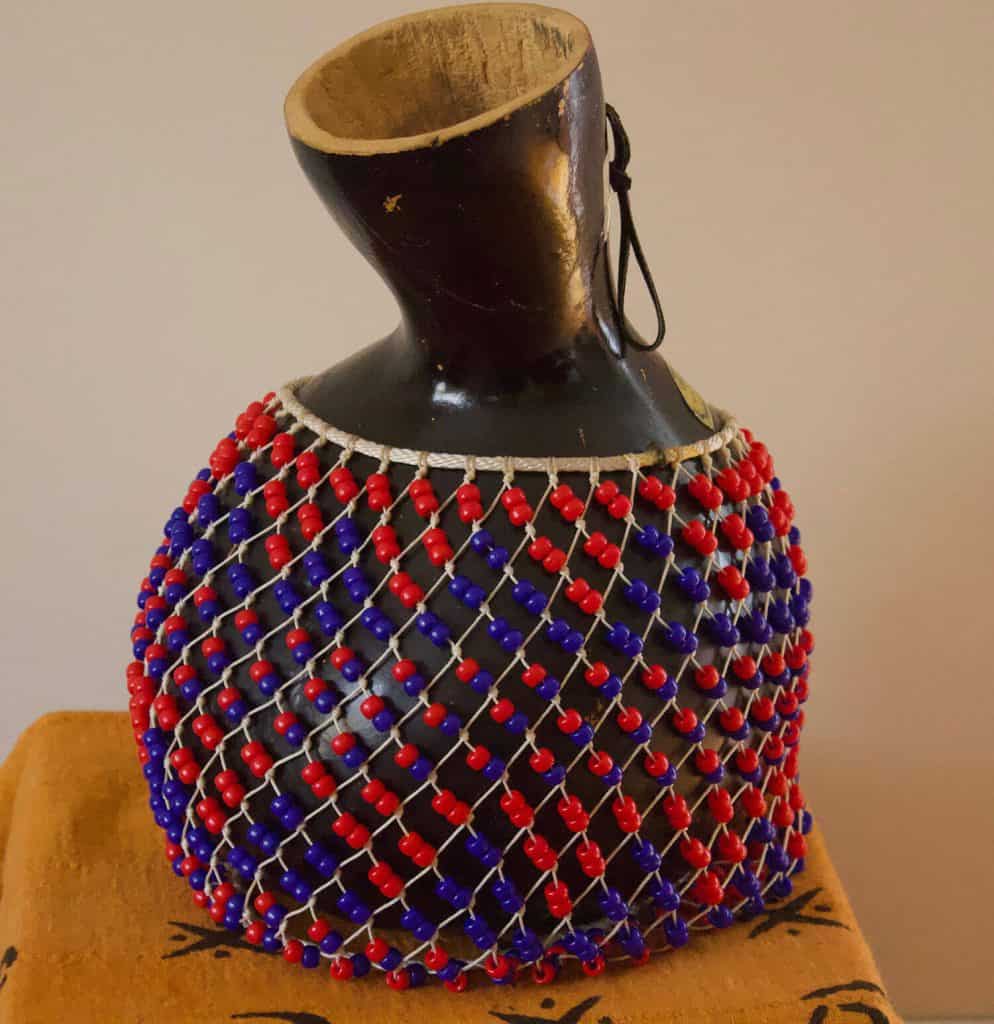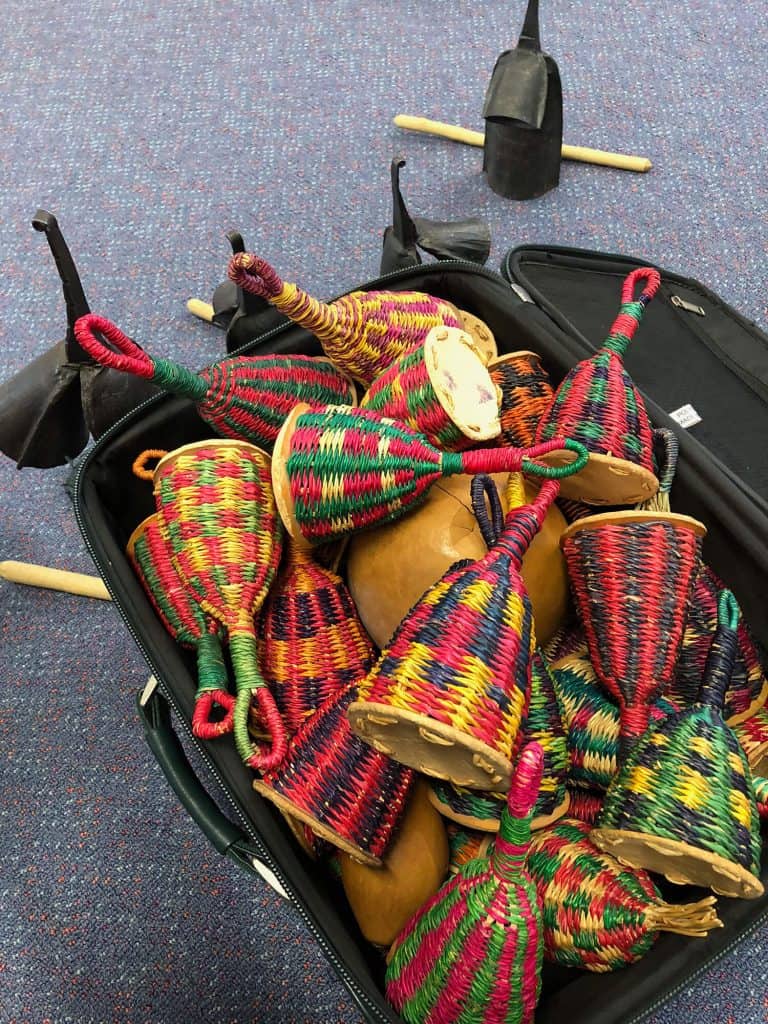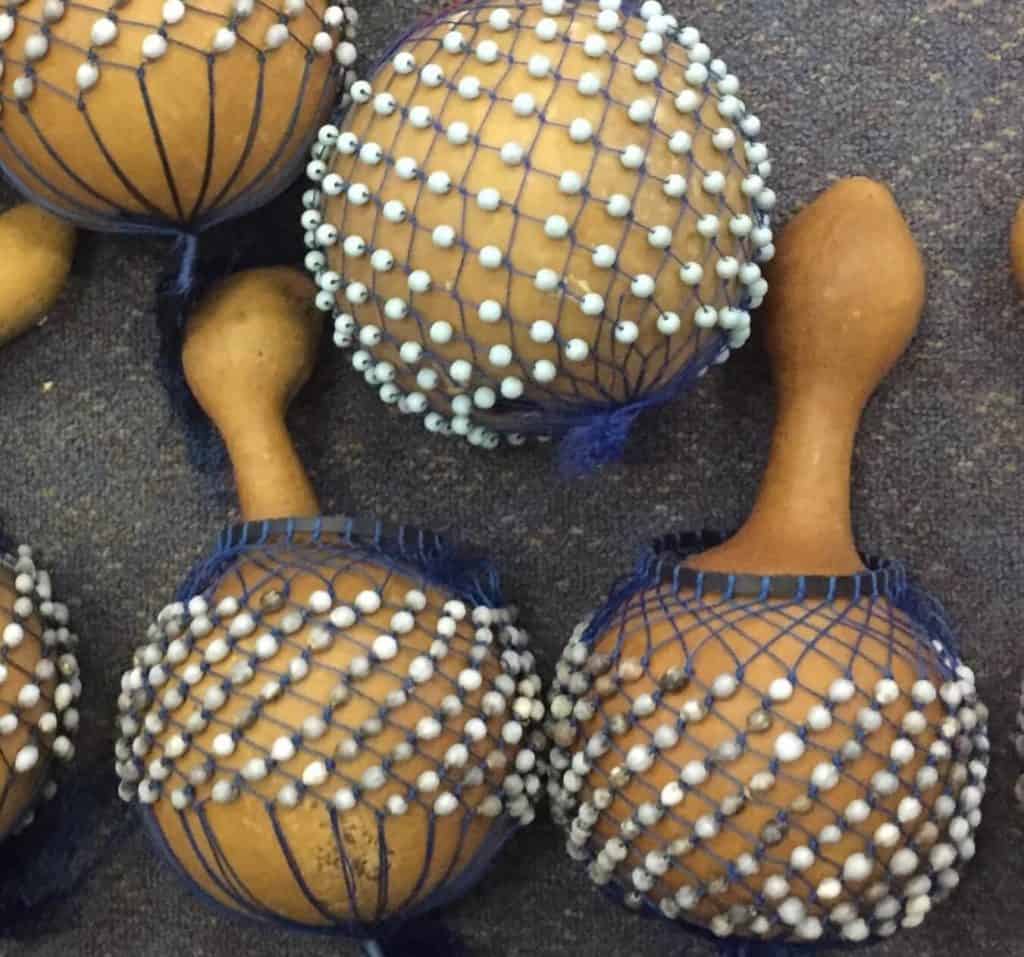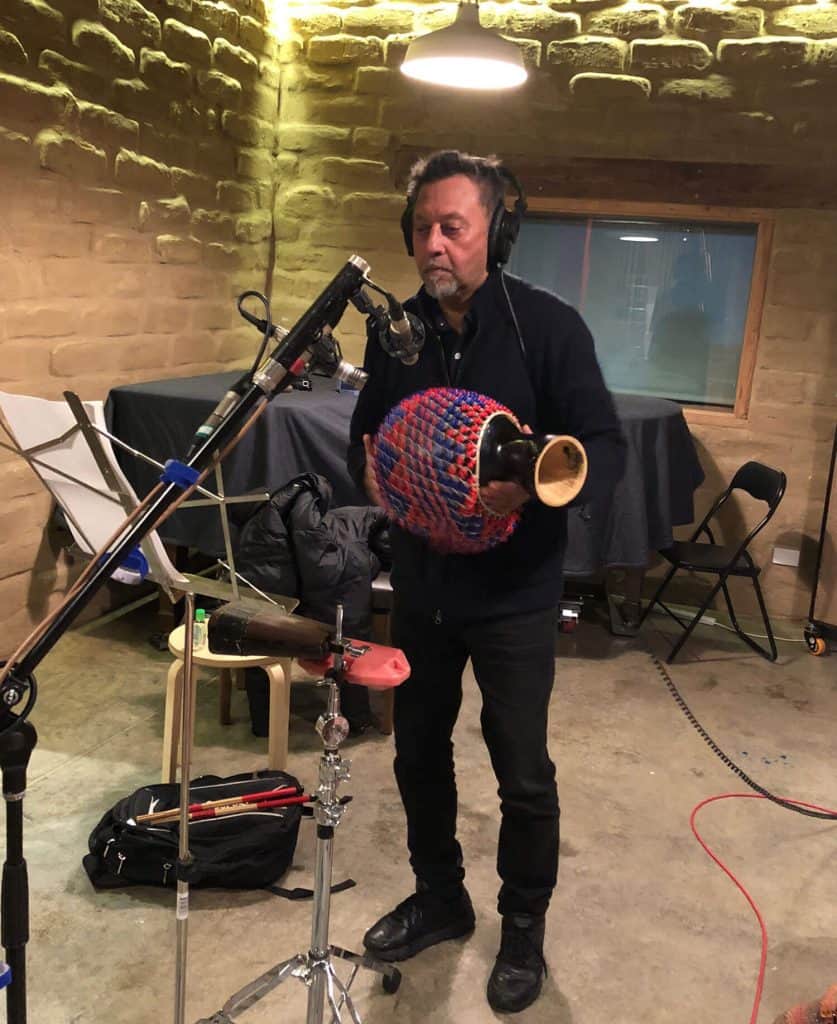Percussions


Shekere and Basket Shakers
Shakers
Ray Demonstrates shakers from Ghana
Some shakers have seeds or beads on the inside of a woven basket-like casing. These types of shakers have different names and are known as Caxixi in Brazil or Maracas in Ghana.One of the sounds is produced by the seeds or beads striking or rubbing against the sides of the shaker. Another sound is produced by striking the beads on the bottom of the shaker. The bottom being made from the shell of a gourd which provides a harder sharp sound.
A larger shaker made from a large round gourd with beads woven on the outside is also used by many cultures. Known as a Shekere in Cuba, the sound is obtained by shaking the gourd from side to side and the beads strking the outsides of the shell create the sound and the rhythm pattern.
Ray Demonstrates the Cuban Style Shekere
Most people would also be familiar with the type of shakers known as Maraca usually played in Latin music. The seeds are inside a casing made from plastic or leather with a wooden handle used to hold the shaker and play rhythms that vary depending on the music being played.
The choice of shaker to be used in an ensemble will depend on several factors including the type of music being played and type of sound required.

In Ray’s African Percussion Classes students learn how to play the different types of shakers and how the rhythms of the shakers fit in with the rhythms of the Djembe, Dun Dun and other drums.
Bells
Ray Plays Ghanaian Double Bell
Another common African Percussion instrument used is the African Bell usually played with a stick.
The Bell is used to accompany the drums.In Ghana a “double” Bell plays a very prominent role as time keeper with the other instruments and drums of the ensemble using the bell to help them keep time. In other countries like Guinea a “single” bell can be attached to the Dun Dun and is played by the Dun Dun player with one hand playing the bell while the other strikes the drum.

Ray Recording Percussion
Traditional Cuban drumming also uses the bell as a time keeper while in modern Cuban and Latin music different bells are played by both the Timbali player and Bongo player. Ray teaches these bell patterns in both his Conga drum and Djembe drum classes. Sometimes more than one bell is used and two or more bells are played together providing a complex polyrhythm for the drums to play with.
Instead of the bell sometimes two sticks struck together replace the role of the bell in Cuban music. These sticks also know as Clave` are used to keep the time line.
Tambourines
There are different types of tambourines used to accompany traditional and more modern music. Some tambourines have skins as well as jingles attached to them and are played both by striking the head with the hand similar to a drum while also shaking the jingles. This style of playing is typical of Brazilian rhythms like the Samba and the Brazilian tambourine is known as a Pandeiro.
If the tambourine has no skin then the rhythm is produced by shaking the jingles from side to side. A variety of techniques are used to produce different rhythms.
Other frame drums are used as Bass drums in Ghana and in countries like Puerto Rico to play traditional rhythms called Plena.
Ray demonstrates techniques on the Tambourine